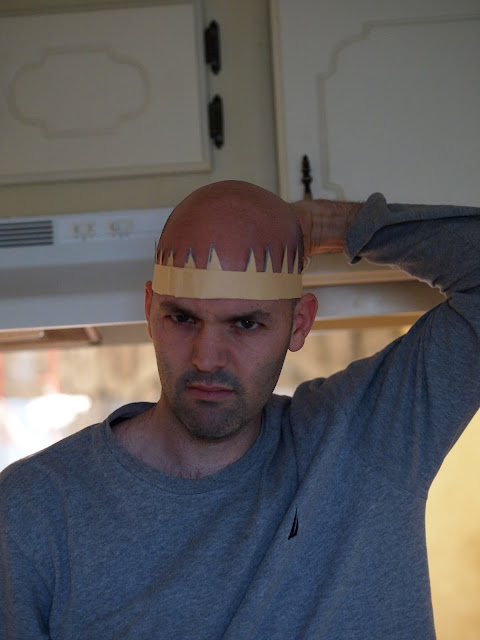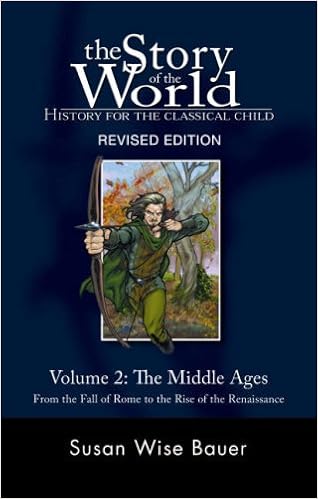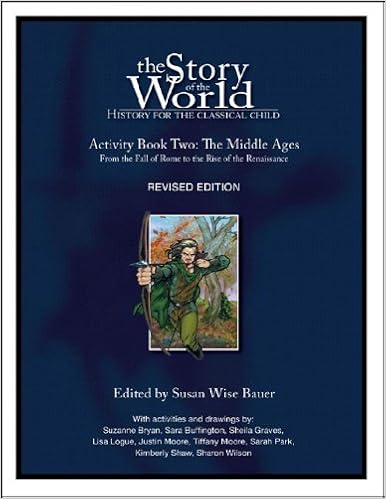History
History
Our Curriculum
Our history curriculum is simple and straightforward. It starts with a story, involves everyone in a project, and then ends with narration. I don't care if they memorize the details, but I do want them to have living experiences. I want them to ask themselves, "would I have done that?" We use Story of the World, by Susan Wise Bauer:
This is the text comprising our spine. (There's also an audio version available.) I have really liked her literary supplement lists, even though our library doesn't always have the books she suggests. There are so many wonderful picture books about history, it just makes sense to check them out while you're learning it chronologically. We also use the activity book:
I enjoyed the first activity in Volume I. In the text, Bauer introduces the concept of archaeology, and that people leave traces of themselves behind them, written and unwritten, that tell stories. So we went to the sandbox at the park, and excavated, theorizing about the people who left these things behind and what their civilization might have been like.
"They used tools!" my kids said excitedly, "and they could read and write!"
We usually do the map work from the Activity Book, (and integrate it into our geography studies), the review questions, and a couple of the projects.
I pace it according to how interested we are, which is why we're only 1/4 of the way through the book and 3/4 of the way through the school year. Speed doesn't matter here. I would, however, recommend starting with Volume 1. It is easy to adapt to the age level(s) you need, and a good subject to learn with a group. Some projects require supplies, so it never hurts to glance ahead at the next couple projects each time you put the book away. We skip it if we're not interested, or if we don't have the resources.
An easy crown project.

The projects include things like recipes, costumes, acting out battles, coloring pages, paper models, games, and pottery.
Pretending to be Celtic warriors.
You could of course skip the activity book and just internet for projects.
A "Moorish battle encampment.")
It all seems to be working, because when my 5-year-old saw Tom Hanks's transformation in the movie "Castaway,"
(Not my image. Stole it from this person, who probably also stole it.)
... he said, "Hmmm. He kind of looks like Charlemagne."
(Also not my image. Stolen from here.)
Studying history gives him a framework on which to hang new ideas. I can't imagine school without it. It's the life of our studies, the play. I love it when my kids interrupt me incredulously with "Wait! Did that really really happen in real life?"
Alongside using Story of the World, the kids report on what they've learned and we add it to our timeline.
The nice thing about string and paperclips, is that we can add as many events as we like. The timeline has room to grow.
Charlotte portraying Sacajawea at our Co-op's Wax Museum. Sacajawea was a childhood heroin of mine, and consequently a chronological and geographical peg, or landmark, on which my brain hangs other information.
When I learn new information, my mind files it next to information I have already cataloged. I put things in sequence, in context, and the structure builds. Our timeline is a visual representation of that structure. I don't add events we haven't learned yet.
Davy Crockett, of course.
To [A.], 1200 years may as well be 12 billion-- but he can understand a sequence of historical landmarks, like "Leif Erickson discovered Newfoundland after the Romans, but before airplanes were invented."
(We had to take a few months off from studying ancient civilizations last year because he just really loves WWI aviation.)
Our timeline started with event cards for each of their birthdays. We added dinosaurs, and Christ. We add events for influential literature too, when we read it, so they can grasp that Grimms' Fairytales are much, much older than Harry Potter.
(Dipping homemade candles after reading The Ox-Cart Man)
When it's time to write history reports, I pull each kid over to the computer with me and have them narrate what they remember. I leave everything in their words, as a tribute to the way primary sources influence how we understand history. We look up a Wikipedia article on the subject and they browse through it to find an image to include on our timeline card. Here are some examples which could be used as a template:
Timeline Card Template .
I wait until I've got a batch and then print 8 cards to a page (so they'll be small) on cardstock. The kids are starting to get the hang of placing the cards in the right spot on the timeline.
These aren't big writing projects ... we only spend a few minutes a week on reports. I only ask for a sentence or two, but as they get older, they naturally make their narrations longer and more complete. We'll have space later in life to fill in the details they didn't absorb this time around.
All in all, we spend 2 or 3 hours a week studying history.
I haven't incorporated bedtime songs aligned to the period of history we're studying like my mindmap suggests, but only because I haven't compiled a list yet.
We take advantage of field trips when we can.
Touring manned replicas of the Nina and the Pinta docked in the Mississippi River
At "Bloody Pond," (Shiloh Military Park) where Civil War soldiers, thirsty during the long battle, dragged themselves to the water, staining it with their blood. Or so the story goes. My children have vivid memories of this place.
At "Bloody Pond," (Shiloh Military Park) where Civil War soldiers, thirsty during the long battle, dragged themselves to the water, staining it with their blood. Or so the story goes. My children have vivid memories of this place.
On their own, the kids also dress up. A lot. I can tell they're synthesizing.
(Halloween, 2016)
In fact, they dress up so much, that I've begun calling our dress-ups "school uniforms." I guess the old adage of homeschoolers in pajamas doesn't apply to us, since my daughter is far more likely to be doing a math lesson in a princess dress.
Even [G.] enjoys studying history with us, especially if it involves reenacting something.
(Learning about chopsticks during a segment on the Shang dynasty.)
We study history to learn how to make good decisions; to learn how to be brave in the face of persecution, how to be wise at the floodgates of conformity, how to step back and love people even when we don't agree, how take charge when necessary, how to think before we act.
(Bloody Pond)
For Geography, see Science.

































You have inspired me to be better with my history. I was using the Story of the World series for ancient times and I enjoyed it. But I have been so poor about teaching history (and possibly too lazy to do the projects) so I hadn't yet bought the Volume 2 wondering "Will I use it?" Now that I have a review from someone else who uses it, I'm going to get it and use it. My kids do love the history but it always seems to take the cut while math and reading are always first in line. But really, history and science are the fun stuff.
ReplyDeleteThat's exactly how I felt at the end of last year :) Now I just need to see if we get through our mathbooks.
ReplyDeleteAm I supposed to be able to click on the history timeline template? I really want to get it. I already put up my timeline string (thanks for the idea) but I was looking for a good template to make the cards.
ReplyDeleteOops! Sorry. I must have forgotten to attach the link. Try it now: https://drive.google.com/file/d/0B01CZII93oyeQ3AtTG5ZeEx2djA/view?usp=sharing
Delete